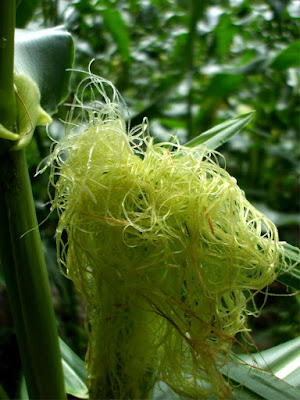 |
| Charlie in the Limelight (Hydrangea) |
When I hear the phrase "all things bright and beautiful" I don't first recall the title line of the old hymn, or think of flowers blooming in the garden. I think of the first book, published in 1974, in a series of four by James Herriot, which recount his experiences as a veterinarian in Yorkshire, England. A fifth book,
Every Living Thing was published in 1992. I read and relished all his books. Even though I never liked the actor that played James in the BBC series, I watched every episode. I spent my childhood on a farm, loved all animals and thought it would be cool to be a veterinarian when I grew up, so I naturally gravitated to the stories which I first read while still in my twenties. I also own a small book called
Animal Stories which I purchased recently and a children's book called
Moses the Kitten.
Now I don't have even
one living thing (animal) to nurture. Jay the Goldfish was kept alive for over four years on my kitchen counter and just died late last fall. All I have left is occasionally taking care of my uncle's dog, Charlie, and recently--old Ana. Charlie is a young dog and I bonded with him as a rambunctious puppy. Now when I garden at my aunt's, the dog follows me around and still always gets in the picture--sometimes just a head or tail shows up.
Charlie is always hunting for something that I rarely see. He did find a nest of bunnies this spring and recently I found a half chewed small turtle in the grass. Last week he had a violently noisy altercation with a big orange cat that ventured on the property, but both seemed to be unscathed by the incident.
I occasionally save a McDouble bun for the dogs, so they greet me with great enthusiasm when I come. Gratifying, I suppose, even if it's only about the food I bring!
Sadly, years ago I contracted a nasty case of poison ivy from Bailey, the dog Charlie replaced, and so I tend to not pet the dogs in the summertime--I show my affection with my voice and the bits of McDonald buns that I toss to them.
Animals of every kind will always hold a bright and beautiful spot in God's creation. The series of books and television programs that followed the publication of that first book, All Things Bright and Beautiful, are still popular. Complete DVD sets of the films are available and even T-shirts:






 I have saved some yellow tuberous begonias in two hanging baskets for years--they nearly die of neglect overwintering in the basement, but always come back to astound me when brought outdoors and watered in the spring.
I have saved some yellow tuberous begonias in two hanging baskets for years--they nearly die of neglect overwintering in the basement, but always come back to astound me when brought outdoors and watered in the spring.











































